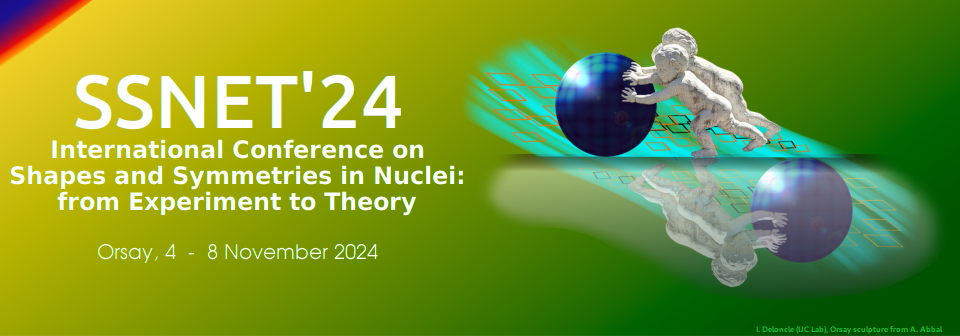Orateur
Description
The study of shapes and collective properties of atomic nuclei is a vast area of research, and low-energy Coulomb-excitation is one of the most powerful experimental techniques for such studies. It provides information not only about the reduced transition probabilities, describing the collectivity of the transitions, but also about the spectroscopic quadrupole moments of excited states, as well as the relative signs of the extracted transitional and diagonal matrix elements.
Typically, following low-energy Coulomb-excitation experiments, a set of matrix elements is determined leading to the use of the Kumar–Cline’s sum rules [1] that allows the determination of the deformation parameters together with their widths.
Coulomb excitation measurements have been performed to study structural changes and the presence of coexisting shapes in the zirconium isotopes, which are particularly interesting as, in recent years, evidence has come to light that they are excellent cases for exhibiting type II shape evolution. In most cases, however, the nuclear matrix elements required to perform precision tests of state-of-the-art nuclear theory in this region are lacking. These isotopes span a wide range of masses from a mid-open-shell region (80Zr40)[2], which is thought to be deformed, through a closed neutron shell at 90Zr50, to a closed neutron subshell (96Zr56), and then to a sudden reappearance of deformation (100Zr60)[3], which has been shown to persist to another mid-open-shell region as far as 110Zr70[4] . This variety of behaviour is unprecedented elsewhere on the nuclear mass surface. It is, therefore, not surprising that the zirconium region has been the subject of intensive experimental and theoretical work in order to gather insight into a variety of different nuclear structure phenomena. Of particular interest is how collectivity evolves in these isotopes and the coexistence observed between various configurations. For this reason we decided to perform Coulomb excitation measurement allowing for an in-depth comparison with theoretical predictions, shedding light on the structure of low-lying excitations in these nuclei.
In this talk, our experimental results will be presented focussing on the Coulomb-excitation measurements performed on the 94-96Zr isotopes.
[1] K. Kumar, Intrinsic quadrupole moments and shapes of nuclear ground states and excited states, Phys. Rev. Lett. 28 (1972) 249.
[2] A. Hamaker, et al., Nature Physics 17, 1408 (2021).
[3] H. Thayer et al., Journal of Physics G: Nuclear and Particle Physics 29, 2247 (2003).
[4] N. Paul et al., Physical Review Letters 118, 032501 (2017).

